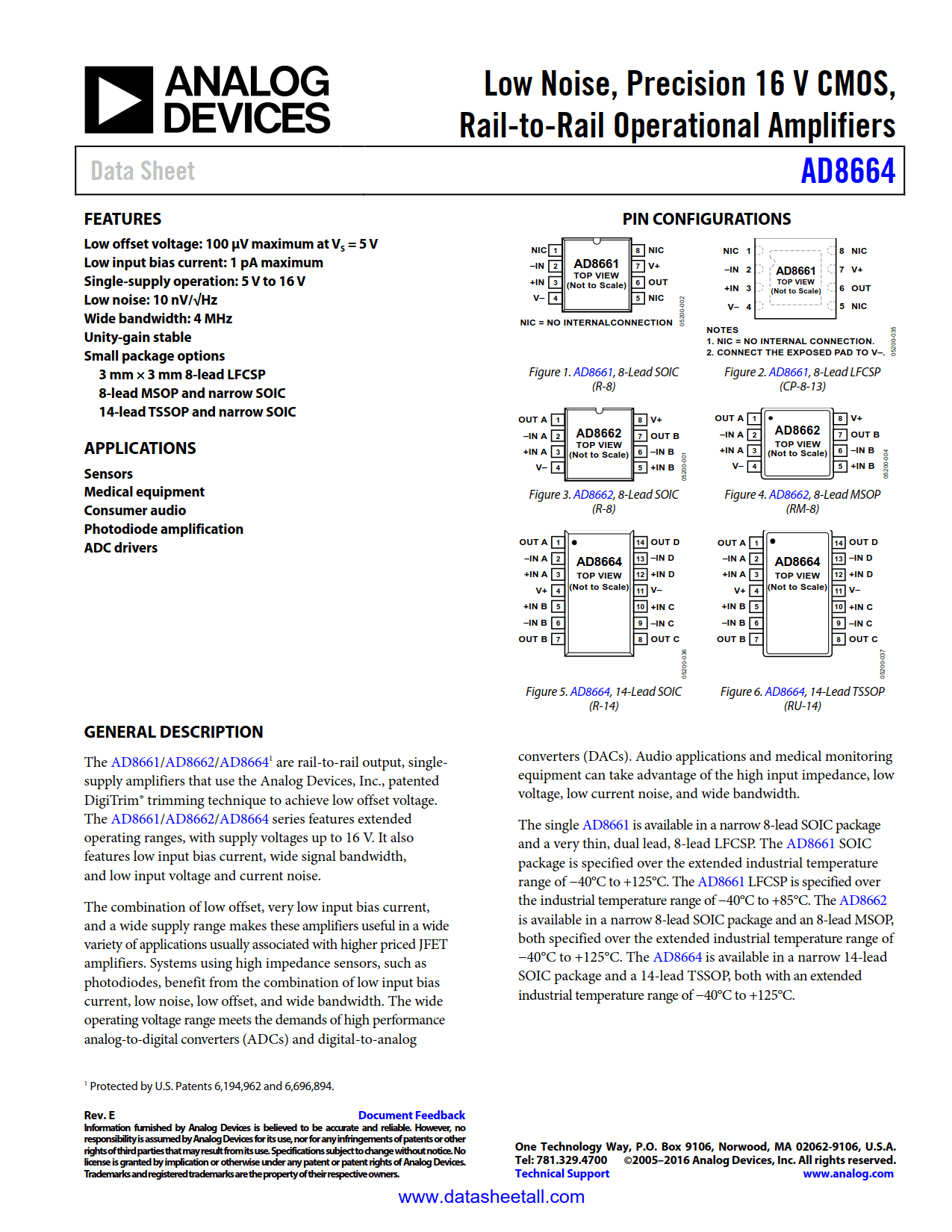
AD8664 Datasheet
16 V Precision, CMOS Rail-to-Rail Quad Op Amp

16 V Precision, CMOS Rail-to-Rail Quad Op Amp
| Part No. | In Stock | Price | Packaging | SPQ | Marking | MSL | Pins | Temp Range | Package Description |
The AD8664 are rail-to-rail output, single-supply amplifiers that use the Analog Devices, Inc., patented DigiTrim® trimming technique to achieve low offset voltage. The AD8664 series features extended operating ranges, with supply voltages up to 16 V. It also features low input bias current, wide signal bandwidth, and low input voltage and current noise.
The combination of low offset, very low input bias current, and a wide supply range makes these amplifiers useful in a wide variety of applications usually associated with higher priced JFET amplifiers. Systems using high impedance sensors, such as photodiodes, benefit from the combination of low input bias current, low noise, low offset, and wide bandwidth. The wide operating voltage range meets the demands of high performance analog-to-digital converters (ADCs) and digital-to-analog converters (DACs). Audio applications and medical monitoring equipment can take advantage of the high input impedance, low voltage, low current noise, and wide bandwidth.
The AD8664 is available in a narrow 14-lead SOIC package and a 14-lead TSSOP, both with an extended industrial temperature range of −40°C to +125°C.